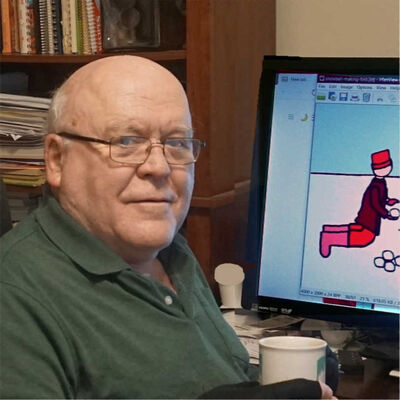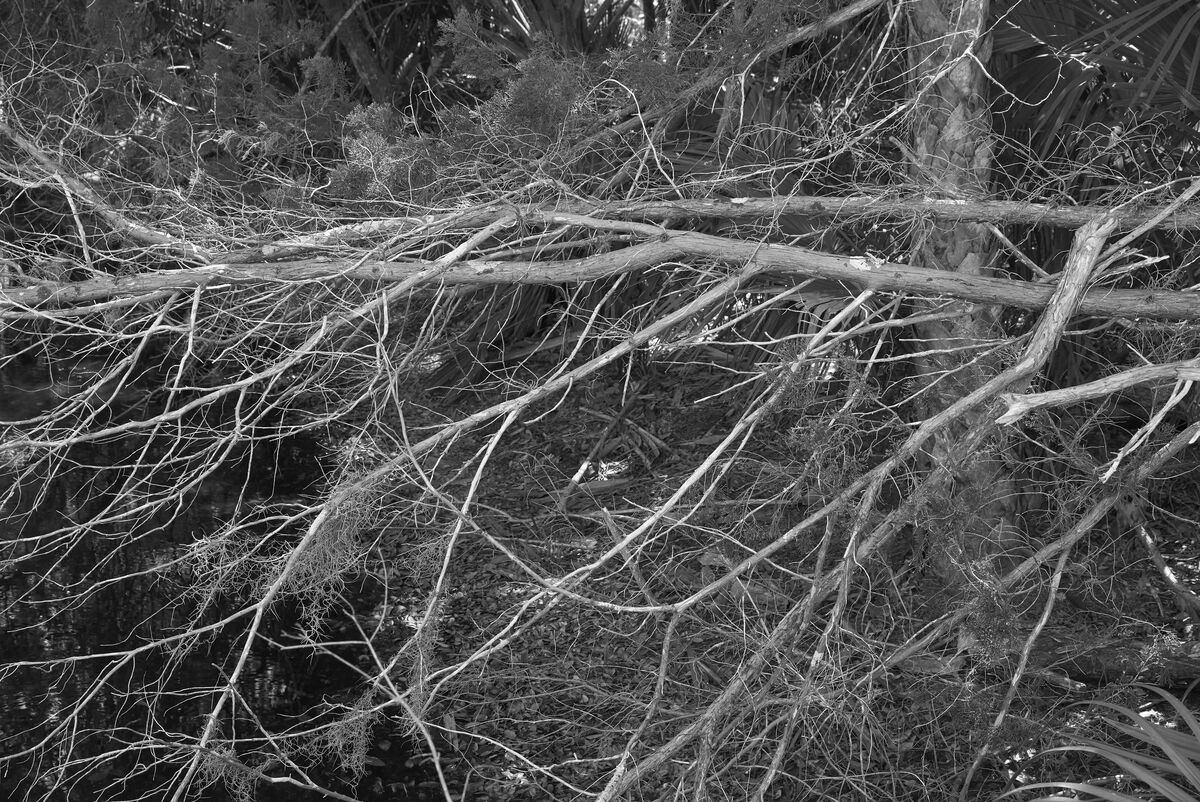Resizing an image can change its character
Apr 25, 2024 14:23:26 #
tcthome
Loc: NJ
selmslie wrote:
Same original file.
On my monitor, I don't see that much or almost any difference. So the only resizing you did was the pixels, Y/N?
Apr 25, 2024 14:28:59 #
Longshadow wrote:
Next question, yes, it exists, but to whom does it matter?
Not me.
Especially since on my screen I cannot see any discernible difference between the examples.
I only reduce the size for web postings, not for printing.
Not me.
Especially since on my screen I cannot see any discernible difference between the examples.
I only reduce the size for web postings, not for printing.
It's more of a cautionary tale.
If I want to print something, I want to create an full size image and use that.
If I want to post it I just need to watch out that reducing the size does not degrade the look I want to show.
Only a few images are at risk - images with lots of small detail, usually B&W, like the one in my initial post.
Apr 25, 2024 14:35:19 #
tcthome wrote:
On my monitor, I don't see that much or almost any difference. So the only resizing you did was the pixels, Y/N?
Yes. The first examples I posted were B&W JPEGs about 6000, 4000 and 2000 pixels wide.
The display made them each fit the screen when I showed them in the viewer or I ran them as a full-screen slideshow.
The same thing happened on my 2k and 4k monitors.
Apr 25, 2024 15:06:47 #
selmslie wrote:
It's more of a cautionary tale.
If I want to print something, I want to create an full size image and use that.
If I want to post it I just need to watch out that reducing the size does not degrade the look I want to show.
Only a few images are at risk - images with lots of small detail, usually B&W, like the one in my initial post.
If I want to print something, I want to create an full size image and use that.
If I want to post it I just need to watch out that reducing the size does not degrade the look I want to show.
Only a few images are at risk - images with lots of small detail, usually B&W, like the one in my initial post.

Apr 25, 2024 15:54:10 #
selmslie wrote:
It’s not exporting the image on the screen. The JPEG is made from the image in memory (virtual, raster image) which is full size - 24MP for the A7II and III, 45.7MP for the Z7.
The images in the photo viewer can be made to fill the screen just as they fill the 7x10.5 print.
The images in the photo viewer can be made to fill the screen just as they fill the 7x10.5 print.
I think you missed my point. When you create that full resolution JPEG it contains all of those pixels. When it’s displayed the CODEC determines how to display those pixels at the screen resolution. When you save it at screen resolution the export program decides how those pixels are used to create the JPEG.
Apr 25, 2024 16:22:44 #
SuperflyTNT wrote:
I think you missed my point. When you create that full resolution JPEG it contains all of those pixels. When it’s displayed the CODEC determines how to display those pixels at the screen resolution. When you save it at screen resolution the export program decides how those pixels are used to create the JPEG.
When I save the image at full resolution it has more pixels than any screen I own.
I also save it at an arbitrary resolution 2048 wide and 4096 wide. Neither of them exactly matches my 2k screen (1920x1080) or my 4k screen (3840x2160).
None of the displays align the pixels exactly with any of the three image sizes when they are displayed in the C1 editor, a print viewer or as a borderless slideshow. I don't have a display with 2:3 aspect ratio so there will always be some pixels lost along the top and bottom or a black band on the left and right of the display
When printing to a 7x10.5 print (conveniently, a 2:3 aspect ratio), the number of printer dots used in each direction may be proportional to the pixel dimensions but the work done in generating the dots is divided between C1 (when the three files are saved) and the print program.
I'm guessing that you already know this so I am elaborating for the sake of those who don't.
Apr 25, 2024 18:17:23 #
selmslie wrote:
When you are looking at an image in your editor you are looking at the full size image. ,,,
The next post shows three different sizes of the same finely detailed high contrast B&W image. You might see the difference in the thumbnails.
If you download the images and look at them without pixel peeping, you can see how much resizing altered the appearance of the image. The difference also shows up when I print the three images.
The next post shows three different sizes of the same finely detailed high contrast B&W image. You might see the difference in the thumbnails.
If you download the images and look at them without pixel peeping, you can see how much resizing altered the appearance of the image. The difference also shows up when I print the three images.
There are several reactions I have when reading your comments and looking at your b&w images.
1.l When one edits a photo file, one is not looking at the full-size image unless one lis using a camera witth a small sensor with a few pixels or one has an enormous monitor.
2. This reminds me of a discussion I had numerous different times with the reviewers and staff at Shutterstock. When comparing photos, one needs to compare apples with apples and not apples with oranges. If my image is 2000x20000 pixels, and another participant's photo is 6000 x 60000 pixel, the only fair way to compare them is at 100% size where each pixel in each photo gets mapped to one pixel in the viewing software which is usually one machine pixel on the monitor. If both my photo and the other participant's photo look just as clear at their respective 100% view, then they must both be accepted as being of the same quality.
3. It seems obvious to me that any photographer, professional or knowledgeable amateur, should know that if a 6000 x 60000 pixel image is resized to a 1500 x 15000 pixel image, then 4 pixels in the original must have been mapped into 1 pixel in the final photo. with the resulting loss of detail.
4. If I want to compare the two images, I referred to in #2, then to be fair in comparing these prints, I need to print them at the same dpi. Thus the 36 MP image will print bigger than the 4.0 MP image, but both should look equally sharp at the same difference away.
So, either we are discussing apples compared to oranges or we are preaching to the choir. To me, neither of these is very informative. --Richard
Apr 25, 2024 20:35:37 #
profbowman wrote:
3. It seems obvious to me that any photographer, professional or knowledgeable amateur, should know that if a 6000 x 60000 pixel image is resized to a 1500 x 15000 pixel image, then 4 pixels in the original must have been mapped into 1 pixel in the final photo. with the resulting loss of detail.
That's the crux of this subject, whether resizing [down] will result in a loss of detail that is reflected in the final result. The question is whether that becomes apparent in the final image.
I think that it does if fine detail is a significant feature of the original image. For some subjects, it is. For others it is not.
Apr 26, 2024 07:35:15 #
Juy
Loc: Delaware
nothing here to see , these are not the droids your looking for.
i see no difference in the color images that would cause concern. the minor luminance difference is all. Same for the B&W, except it shows a greater degree. Both of which can be adjusted before export to achieve the same.
So yes a slight difference but really is that a concern?
i see no difference in the color images that would cause concern. the minor luminance difference is all. Same for the B&W, except it shows a greater degree. Both of which can be adjusted before export to achieve the same.
So yes a slight difference but really is that a concern?
Apr 26, 2024 07:35:56 #
selmslie wrote:
Same original file.
There is so much to look at in your example it is hard to identify differences. The one element I concentrated on because it is easily identified is the horizontal branch at the bottom of the photo. It is much clearer with more contrast in the top shot as compared to the bottom one.
Apr 26, 2024 08:44:17 #
Juy wrote:
nothing here to see , these are not the droids your looking for.
i see no difference in the color images that would cause concern. the minor luminance difference is all. Same for the B&W, except it shows a greater degree. Both of which can be adjusted before export to achieve the same.
So yes a slight difference but really is that a concern?
i see no difference in the color images that would cause concern. the minor luminance difference is all. Same for the B&W, except it shows a greater degree. Both of which can be adjusted before export to achieve the same.
So yes a slight difference but really is that a concern?
The colors are not affected by the compression. Neither are they altered in the print thanks to the use of an accurate ICC profile. But the differences in the B&W versions are certainly a cause for concern.
As you edit an image in your program you may be making decisions about the overall impression as well as the way that the details are seen. You have the opportunity to look closer than anyone else ever will.
The ideal way to get everything to work is to have the print look as closely as possible to the screen image, WYSIWYG. You don't want to print something and then have to go back to your editor and guess about how to change the image on the screen to get the print to look the way you want it.
Bridges wrote:
There is so much to look at in your example it is hard to identify differences. The one element I concentrated on because it is easily identified is the horizontal branch at the bottom of the photo. It is much clearer with more contrast in the top shot as compared to the bottom one.
I will post another set of examples for this particular image shortly.
Apr 26, 2024 08:53:35 #
profbowman wrote:
So, either we are discussing apples compared to oranges or we are preaching to the choir. To me, neither of these is very informative. --Richard
So, either we are discussing apples compared to oranges or we are preaching to the choir. To me, neither of these is very informative. --Richard
You did not take bananas into account.

---
Apr 26, 2024 09:34:05 #
selmslie wrote:
That's the crux of this subject, whether resizing [down] will result in a loss of detail that is reflected in the final result. The question is whether that becomes apparent in the final image.
I think that it does if fine detail is a significant feature of the original image. For some subjects, it is. For others it is not.
I think that it does if fine detail is a significant feature of the original image. For some subjects, it is. For others it is not.
That 4k rendition is an example of what might happen to a color image during the demosaicing stage.
Bayer array demosaicing entails combining a red, two green and a blue pixel (a 2x2 square) to make each RGB pixel. Each raw pixel is used four times so the end RGB result is almost exactly the same size as the original raw array. Since half of the raw pixels are green, a 24MP camera capture 12MP of green resolution interspersed with 6MP each of red and blue information. The demosaicing process has been estimated to reduce the sharpness of the image by about 50%. That is close to the loss that can be seen in the 4k image above.
But the B&W images I have been showing here were captured on a 24MP sensor with no Bayer array. They have been processed without going through the demosaicing step. Each pixel contains the luminosity value from a single raw pixel. I have compared the results from 24MP monochrome image to a 45.7MP image from a Z7, using the same lens, and both of them appear to be equally sharp.
Below are four images that I printed at 7x10.5" on Red River Polar Gloss Metallic. As I run through the set, the sharpness changes are hard to see. What is easier to see is that the brightness of some of the highlights increases as the compression increases.
I could use the full size image to make a 14x21" print and it would look just right. I could make it even larger since the viewer would need to back away from the print. I won't because paper and ink are expensive.
The smaller sizes could be posted for display. They could be used for smaller prints, but it would do not harm to print from the larger version.
Full size image - 24MP 574ppi
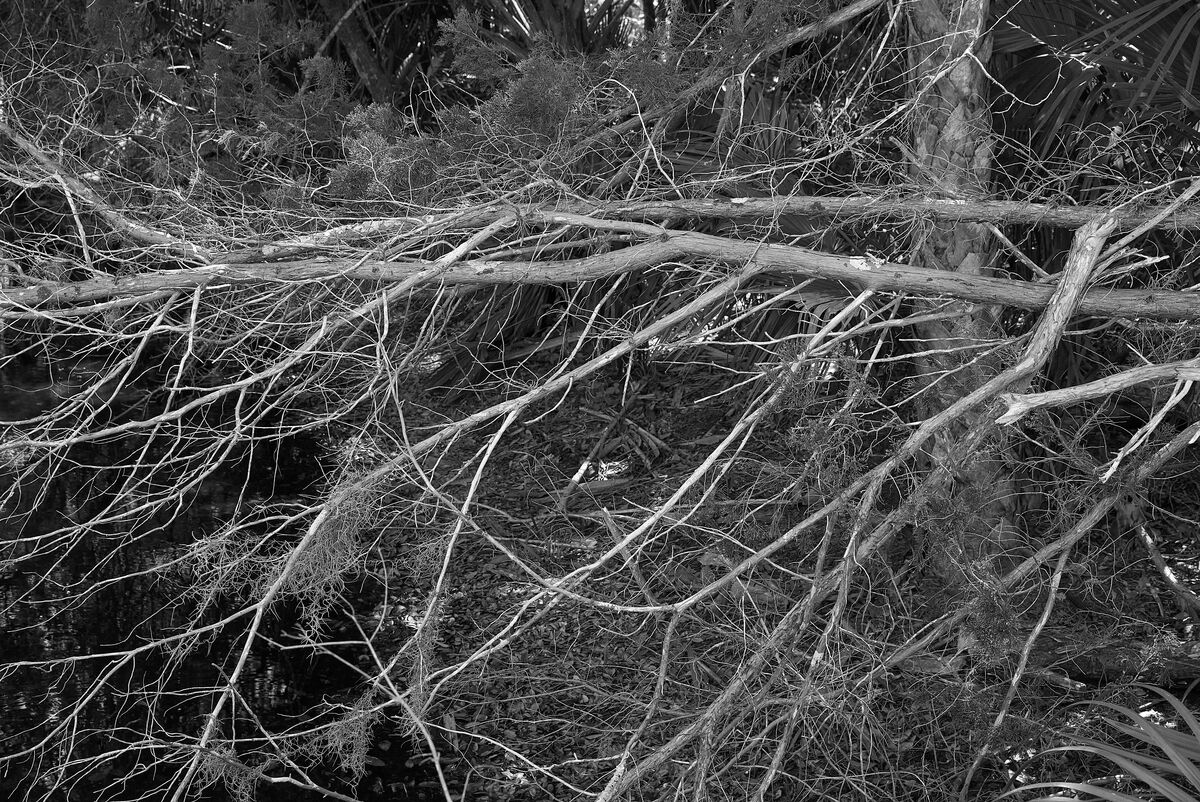
(Download)
2x2 squares - 6MP 287ppi
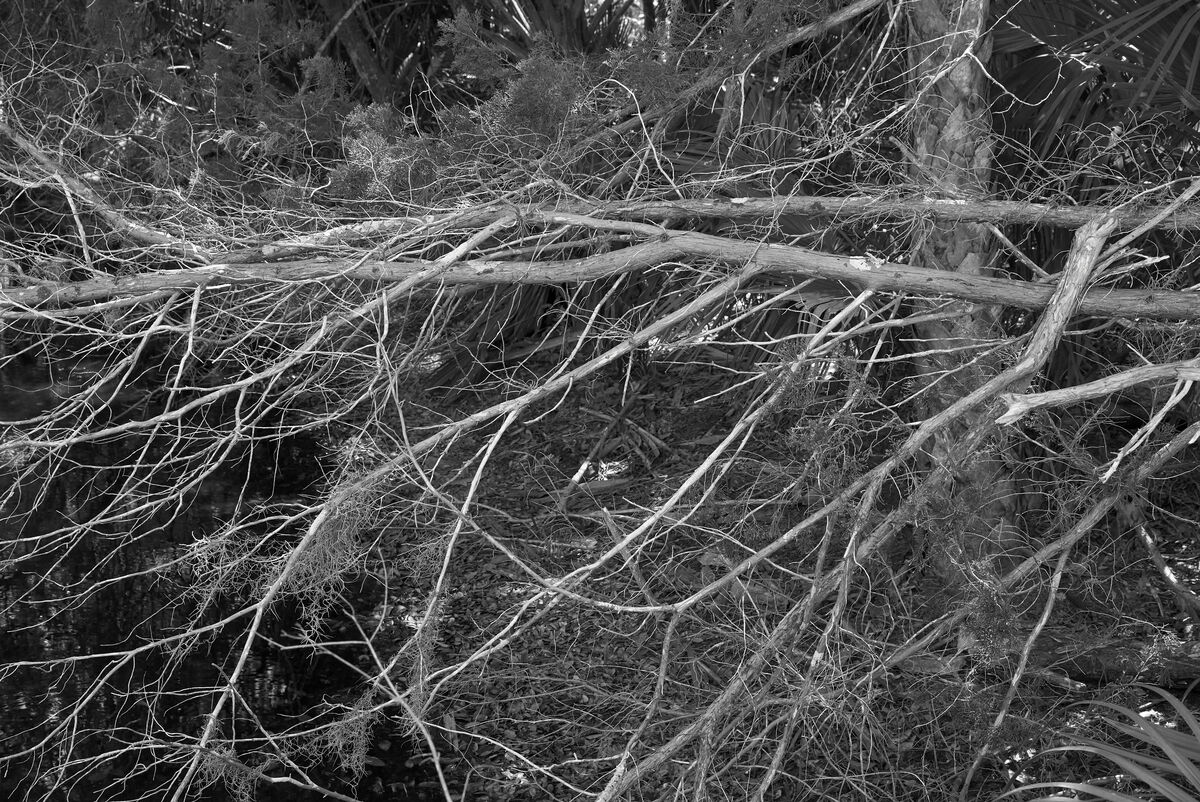
(Download)
3x3 squares - 2.67MP 191ppi
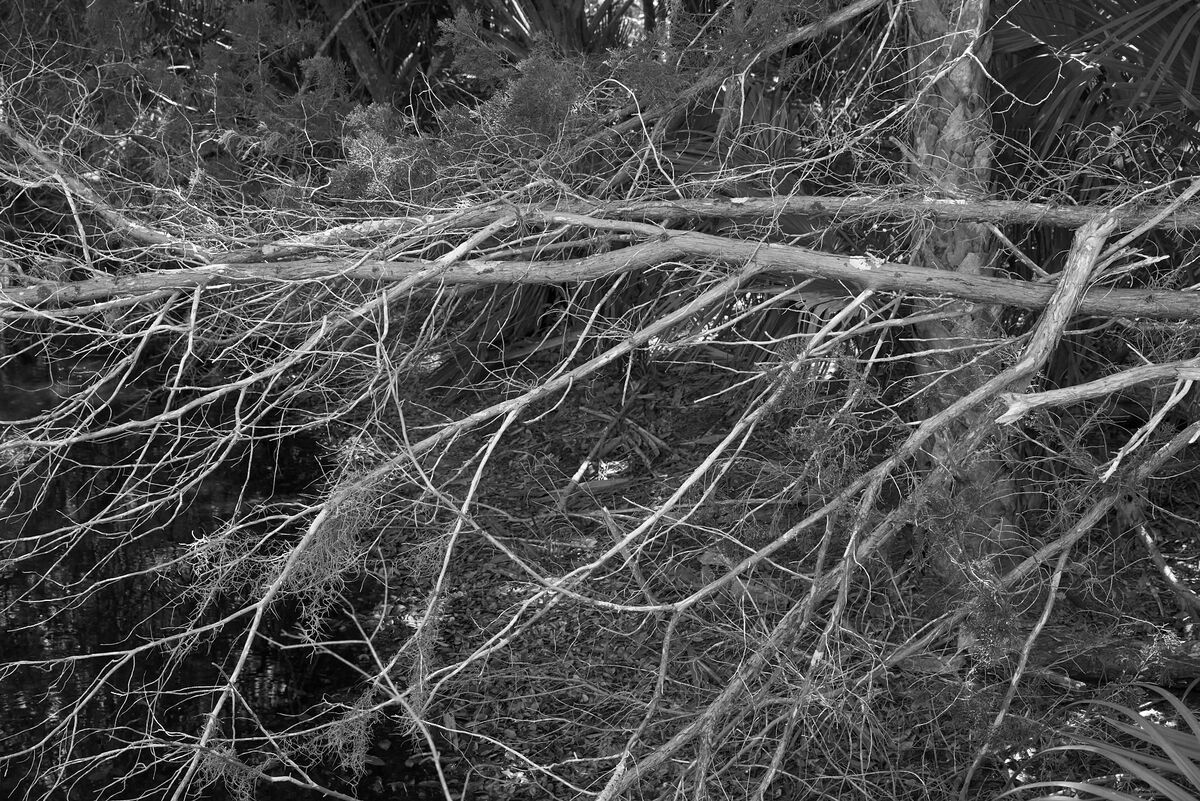
(Download)
4x4 squares - 1.5MP 143ppi (the printer warned me that 143ppi is not enough)
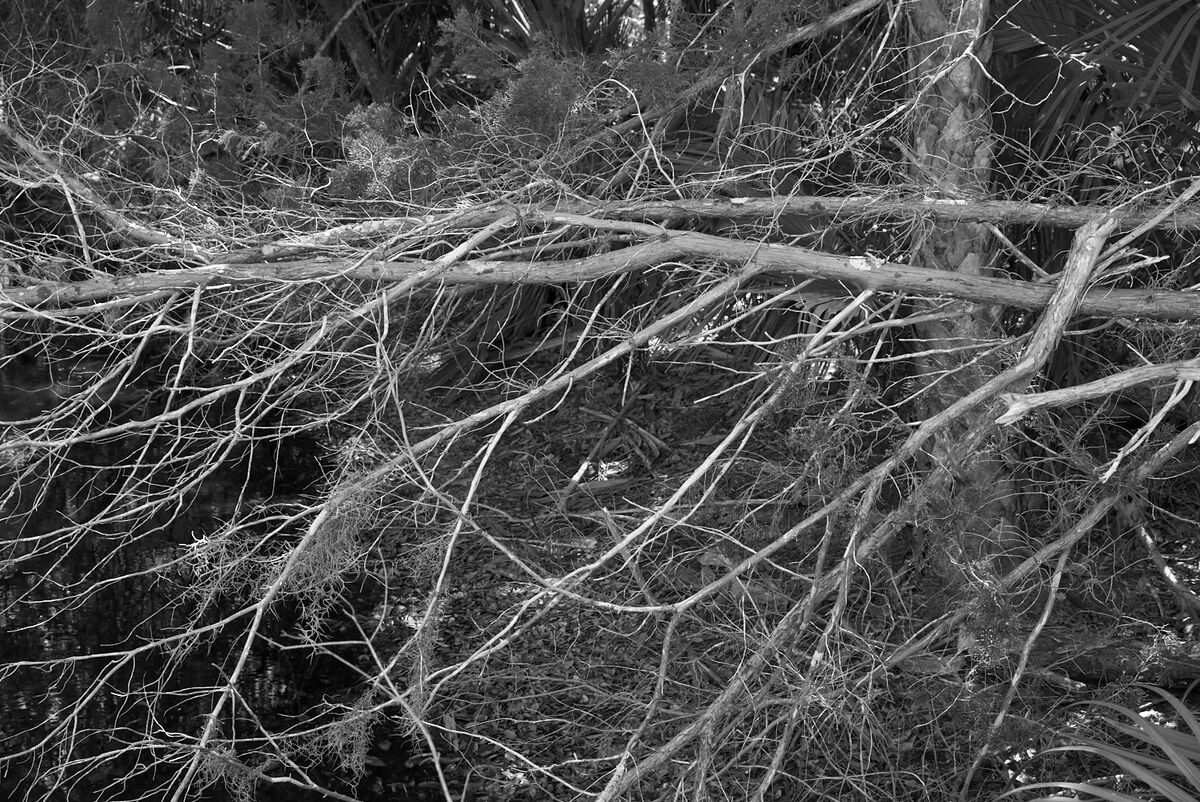
(Download)
Apr 26, 2024 11:47:42 #
selmslie wrote:
That's the crux of this subject, whether resizing [down] will result in a loss of detail that is reflected in the final result. The question is whether that becomes apparent in the final image.
I think that it does if fine detail is a significant feature of the original image. For some subjects, it is. For others it is not.
I think that it does if fine detail is a significant feature of the original image. For some subjects, it is. For others it is not.
My point is that in geneeral when one reduces the size of an imalge, one loses pixels and therefore loses information. This loss of pixel information means that reducing the size of an image always leads to reduction in detail if the photo has detail to begin with. Only in rare cases of blank areas of a given color will nothing be lost.
Note that this loss of pixels can never be rreconstructed with accuracy since there is always many combinations of pixels that can result in reduced pixels.
Here is a simplified illustration, an 8 x 1 pixel image, showing this loss of information from the reduction in the number off pixels. --Richard
Apr 26, 2024 12:10:37 #
profbowman wrote:
My point is that in geneeral when one reduces the ... (show quote)
Thank you Professor. It makes a lot of sense without all the gobbledygook!

---
If you want to reply, then register here. Registration is free and your account is created instantly, so you can post right away.



